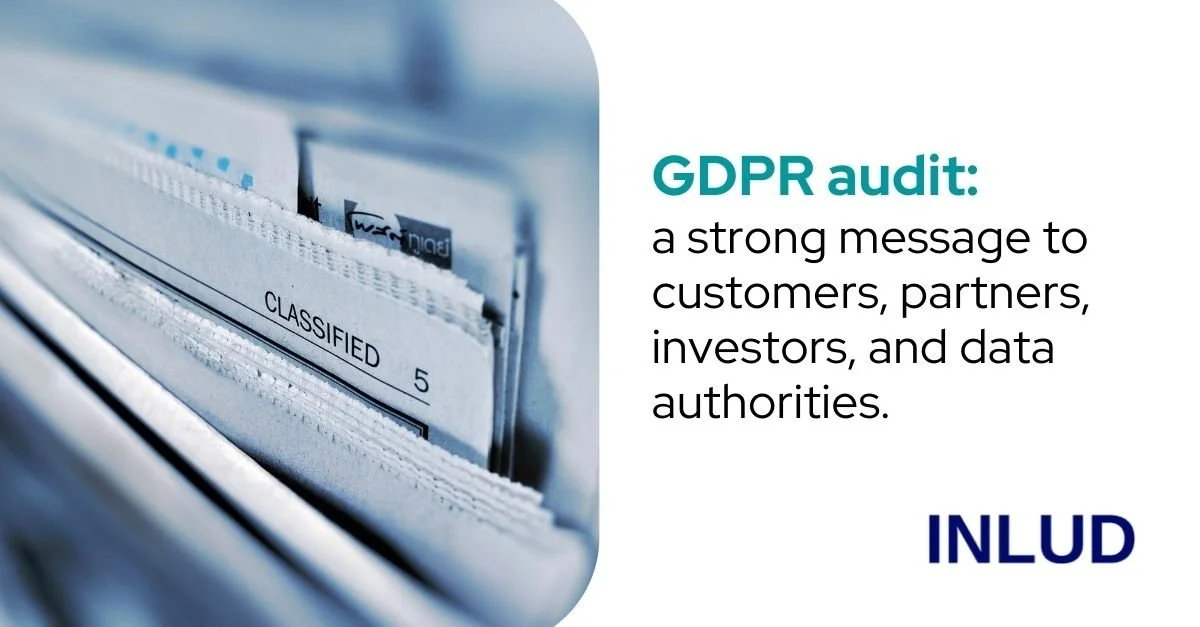GDPR audit: a strong message to customers, partners, investors, and data authorities.
General Data Protection Regulation 2016/679 (GDPR) is a legislative instrument that lays down specific actions but leaves most decisions and actions to the organisations. The Regulation provides for both risk assessment and impact assessment and certification and a code of conduct.
When assessing compliance and practices of a business through a GDPR audit, it is appropriate to apply international practices, such as risk assessment requirements and methods detailed in the international standard ISO 31000 (Risk Management), or it is recommended that the privacy impact assessment be carried out in accordance with standard ISO 29134.
The main benefits of a GDPR audit are:
An ordered and compliant data and information management system – a strong message to your customers, partners on the security of your information.
Risk management, preventing threats, and options for improving information security.
Promoting awareness, communication, and training to raise awareness among employees of risks and risks to day-to-day work.
Emergency preparedness.
During this process, there are several equally important topics for enterprise data management to be outstanding:
Right to privacy
People have a right to know what personal information you have on them and how you use it. They also have a right to know how long you intend to keep their information and why you want to keep it for that long. You must provide them with a free copy of this information, but you may charge a reasonable cost for subsequent copies. Ascertain that the individual requesting the data is whom they say they are. Within a month, you should be able to fulfill such requirements.
Governance and accountability
Making sure someone in your organization is accountable for GDPR compliance is another component of "data protection by design and by default." This individual should have the authority to assess data protection policies and their implementation.
Information security
You must adhere to the "data protection by design and by default" principles, which include putting in place "adequate technical and organizational safeguards" to safeguard data. To put it another way, data protection is now something you must consider whenever you work with other people's personal information. You must also ensure that any processing of personal data complies with Article 5's data protection guidelines. Encryption is one example of a technical precaution, while organizational measures include things like limiting the quantity of personal data you collect or deleting data you don't need. The key is that you and your staff should be aware of it at all times.
Transparency and legal foundation
Organizations with more than 250 workers or that process higher-risk data must preserve an up-to-date and complete account of their processing activities and be willing to present it to regulators upon request. A data protection impact assessment is the best way to demonstrate GDPR compliance. Organizations with less than 250 employees should also perform an evaluation since it will make it easier to comply with the GDPR's other criteria. If possible, the reasons for the processing, the type of data you process, who has access to it in your organization, any third parties who have access (and where they are situated), what you're doing to safeguard the data (e.g. encryption), and when you plan to wipe it should all be included in your list.
Despite certain sectoral peculiarities, when the aforementioned is considered thoroughly, one can be sure that the organisation is taking utmost care in managing personal data of their clients, partners, and employees, as well as be sure that the enterprise is generally compliant with most requirements of the GDPR.

